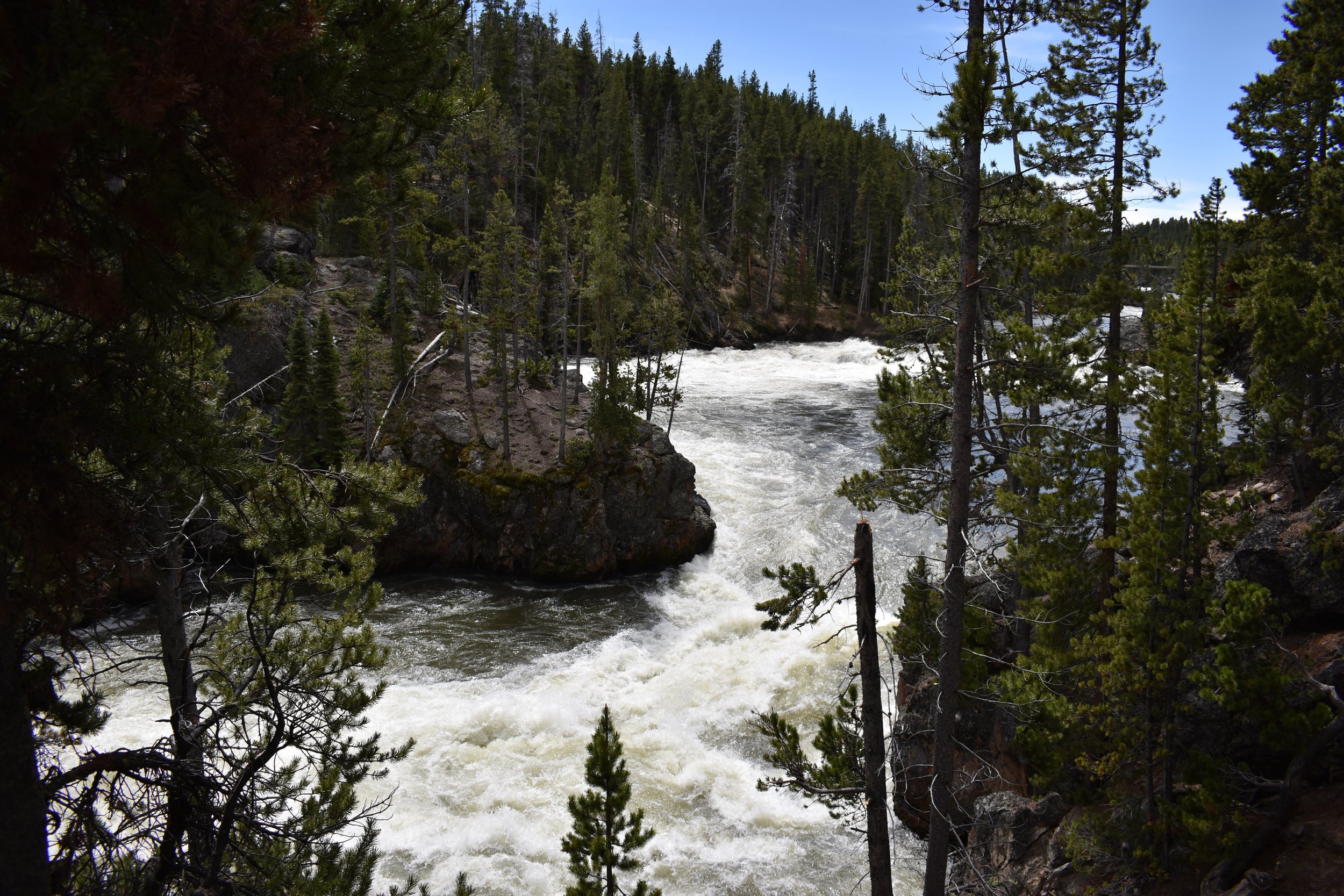Travel With Me: Yellowstone National Park (Day Two)
If you missed part one of this series, where we explored Mud Volcano, Norris Geyser Basin, and Mammoth Hot Springs, check it out before you keep reading!
Two weeks ago, I was given the amazing opportunity to explore Yellowstone National Park in Wyoming as part of a research grant through Minnesota State University's English department, where I am currently pursuing my MFA in Creative Writing. To join me on the adventure, I brought along my forever-traveling-partner, Mary, and my brother, Alan. Let's jump right in with day two!
The Grand Canyon of Yellowstone
South Rim: Artist Point, Lower Falls, & Point Sublime
Our first stop of the day was to see (besides Old Faithful) one of the most iconic features of Yellowstone: its Grand Canyon and staggering waterfall. Yellowstone River, the longest undammed river in the continental United States, carved this canyon through erosion about 10,000 to 14,000 years ago (making it relatively new in geological terms). The canyon walls are painted in yellows, oranges, and reds from the iron compounds in the rock--as the iron is oxidized, the rocks rust.
The Lower Falls, which can be viewed from Artist Point, is 308-feet tall, the tallest in the park and more than twice the height of Niagara Falls. We viewed it at peak runoff time (spring, with the snow-melt), when about 63,500 gallons per second flow over the falls.
I think artist John Muir best described Yellowstone's breathtaking Grand Canyon when he wrote these words in Our National Parks in 1901: "The walls of the cañon from top to bottom burn in a perfect glory of color, confounding and dazzling when the sun is shining,—white, yellow, green, blue, vermilion, and various other shades of red indefinitely blending. All the earth hereabouts seems to be paint. Millions of tons of it lie in sight, exposed to wind and weather as if of no account, yet marvelously fresh and bright, fast colors not to be washed out or bleached out by either sunshine or storms. The effect is so novel and awful, we imagine that even a river might be afraid to enter such a place."
Alan described it another way as we hiked from Artist Point to Point Sublime: humbling. To be made small by the mammoth forces of nature laid bare before you. To peer over the edge of a canyon carved from rock, painted by chemical reaction.
Through the relatively easy hike out to Point Sublime, we witnessed awe-inspiring views of the canyon and were able to escape the crowds of tourists at Artist Point. In late May, the river rushed through the valley like a freight train below, while snow still clung to the trail as it climbed steadily uphill.
It was also during this hike that we discovered the effects of elevation on people from low elevation areas: where the three of us are from (Lexington, Kentucky) is only 978 feet above sea level, while Point Sublime was about 7,800 feet above sea level. During this hike, and the many subsequent hikes we took later on, we noticed it was much more difficult to hike uphill than it should have been, and we needed to expend much more energy than we normally would to keep moving for a hike that was only a couple of hours long.
North Rim: Brink of upper falls, lookout point, & Grand View
Much of the South Rim's hiking trails were closed for maintenance, so the North Rim was our only chance to venture into the canyon and climb down next to the writing, frothing waters of the Yellowstone River. From Brink of the Upper Falls, we marked the river's serpentine route, took in the thunderous roar of the water, then gazed over the platform at the gushing falls below. And the overlooks on this drive were nothing short of breathtaking.
It was also here on the North Rim drive that we caught sight of an osprey on its nest, balanced precariously on a column of rock jutting from the canyon below.
West Thumb Geyser Basin
West Thumb Geyser Basin is located on the shores of Yellowstone Lake, towards the southern half of the park. Its geysers and hot springs vary from aquamarine to ocean blue to ochre, with rivers of rust feeding into the lake. Abyss Pool (pictured second row, middle) was named for its impressive deepness, and W.W. Wylie wrote in 1882 that it's walls, "coral-like in formation and singular in shape, tinted by the water's color, are surely good representations of fairy palaces."
The dome-like formation (pictured top right) is called Fishing Cone, so named because fishermen used to catch a fish from the cold water of the lake and reel it in over the hot spring, boiling it on the hook. At one time, before the practice was seen as unsanitary, this strange hook-and-cook feat was famous at Yellowstone, and visitors would dress in aprons and chef hats to see a demonstration and have their pictures taken at the sight.
If you liked this post, don't forget to give it a "like" down below, and check out the rest of the series: Part One, Part Three, Part Four.



























